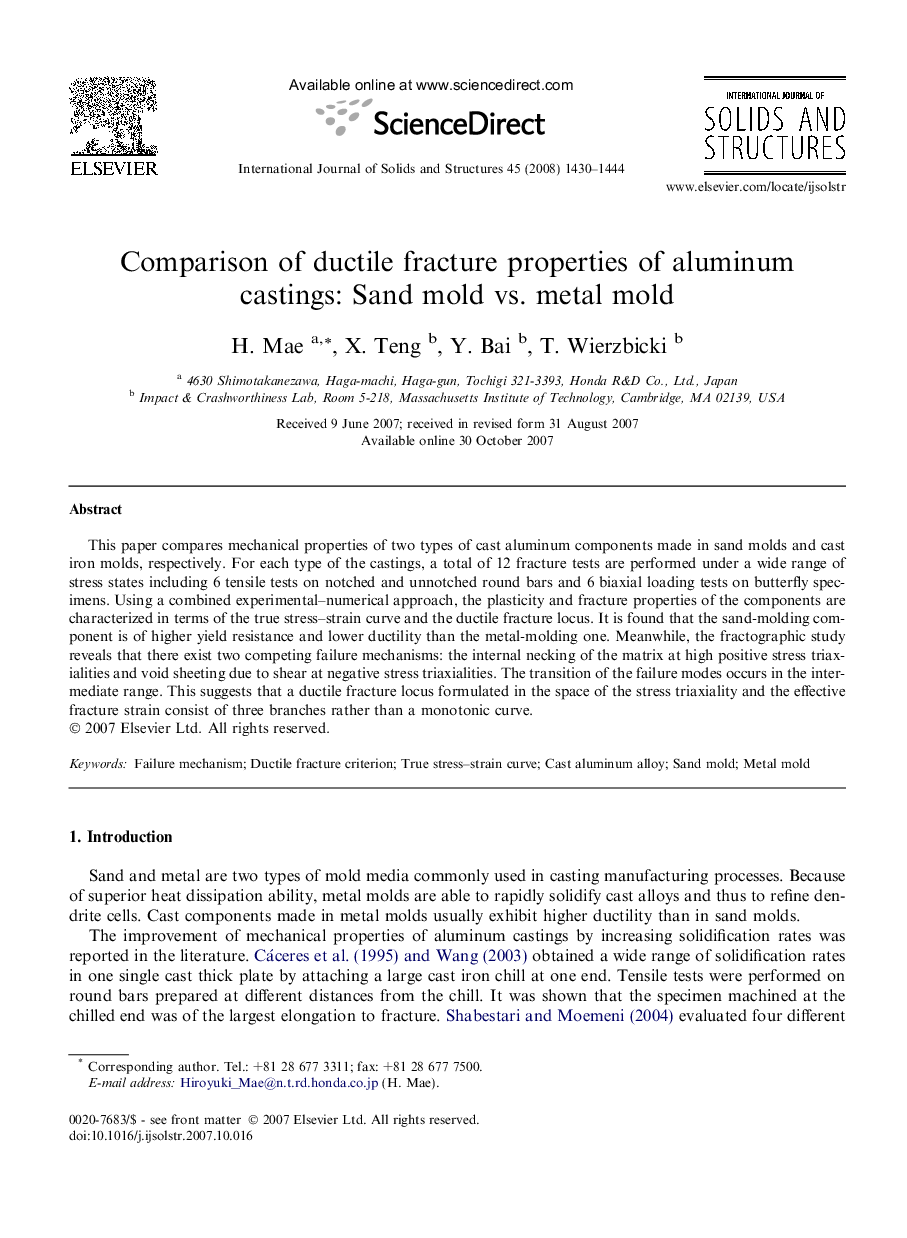| Article ID | Journal | Published Year | Pages | File Type |
|---|---|---|---|---|
| 279560 | International Journal of Solids and Structures | 2008 | 15 Pages |
This paper compares mechanical properties of two types of cast aluminum components made in sand molds and cast iron molds, respectively. For each type of the castings, a total of 12 fracture tests are performed under a wide range of stress states including 6 tensile tests on notched and unnotched round bars and 6 biaxial loading tests on butterfly specimens. Using a combined experimental–numerical approach, the plasticity and fracture properties of the components are characterized in terms of the true stress–strain curve and the ductile fracture locus. It is found that the sand-molding component is of higher yield resistance and lower ductility than the metal-molding one. Meanwhile, the fractographic study reveals that there exist two competing failure mechanisms: the internal necking of the matrix at high positive stress triaxialities and void sheeting due to shear at negative stress triaxialities. The transition of the failure modes occurs in the intermediate range. This suggests that a ductile fracture locus formulated in the space of the stress triaxiality and the effective fracture strain consist of three branches rather than a monotonic curve.
